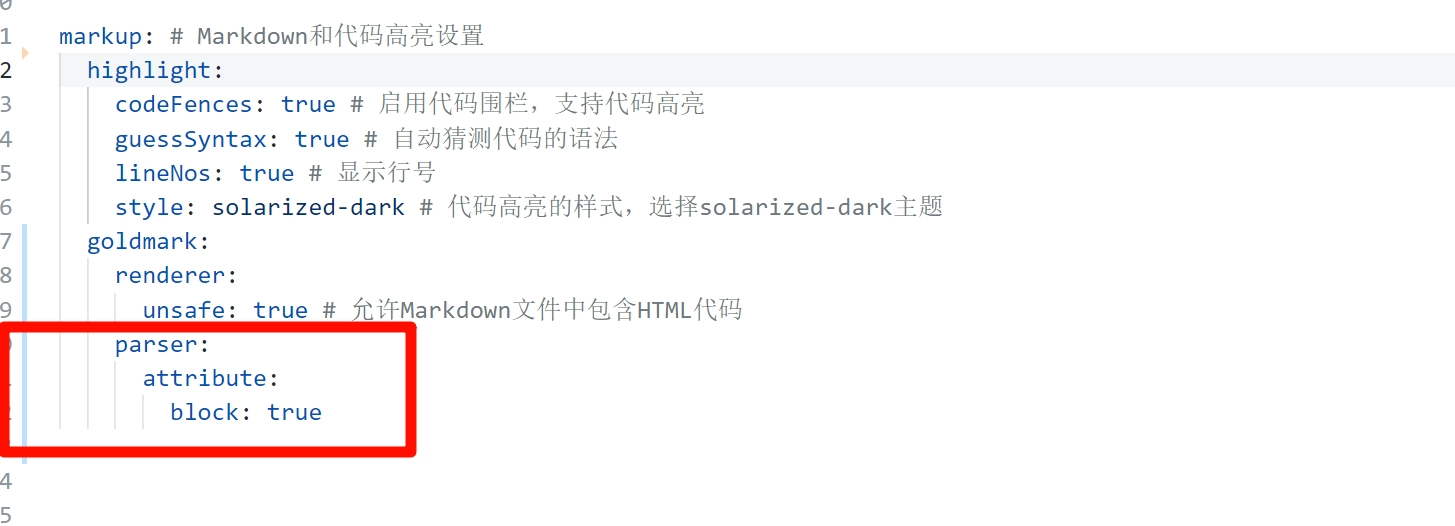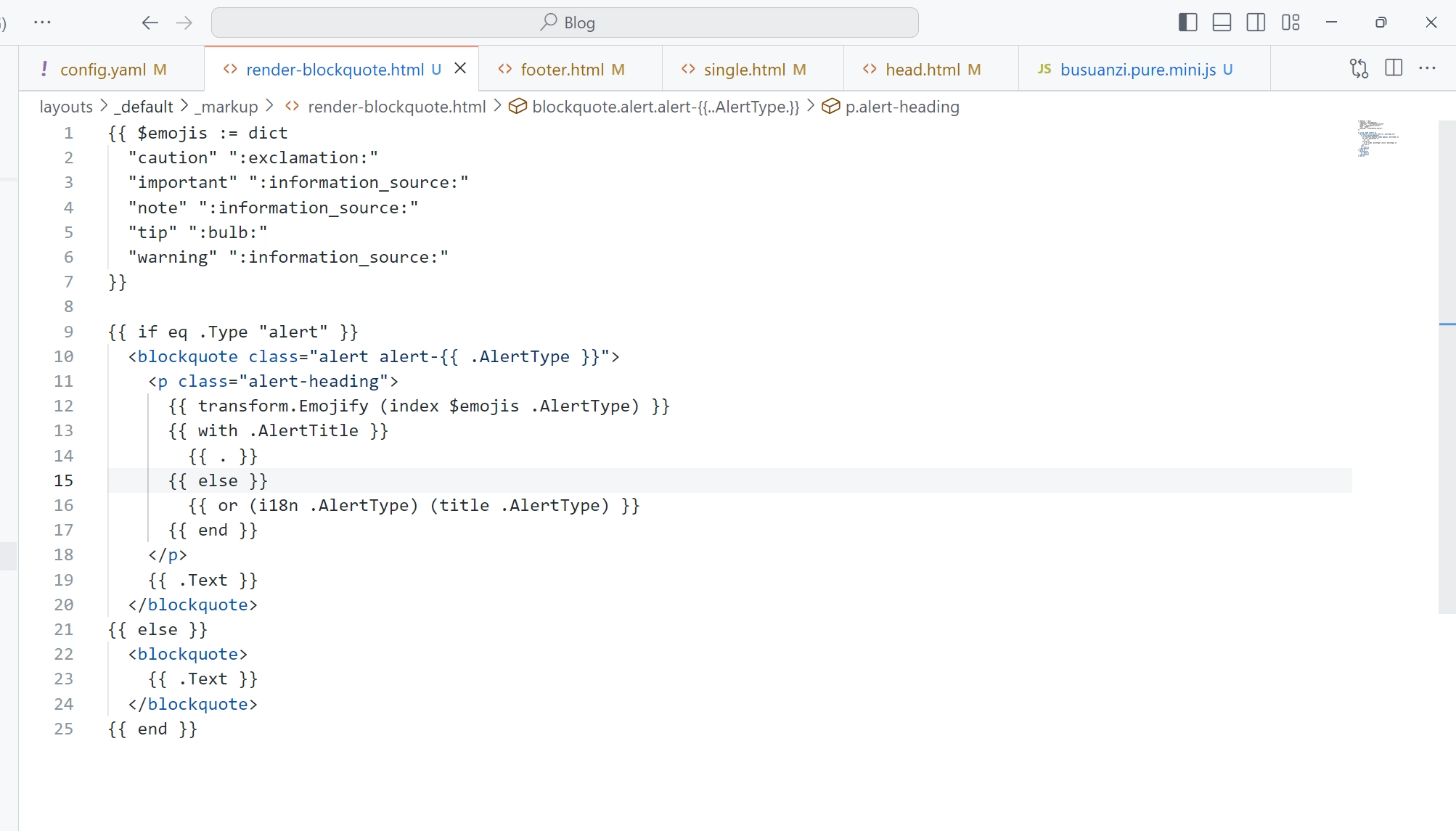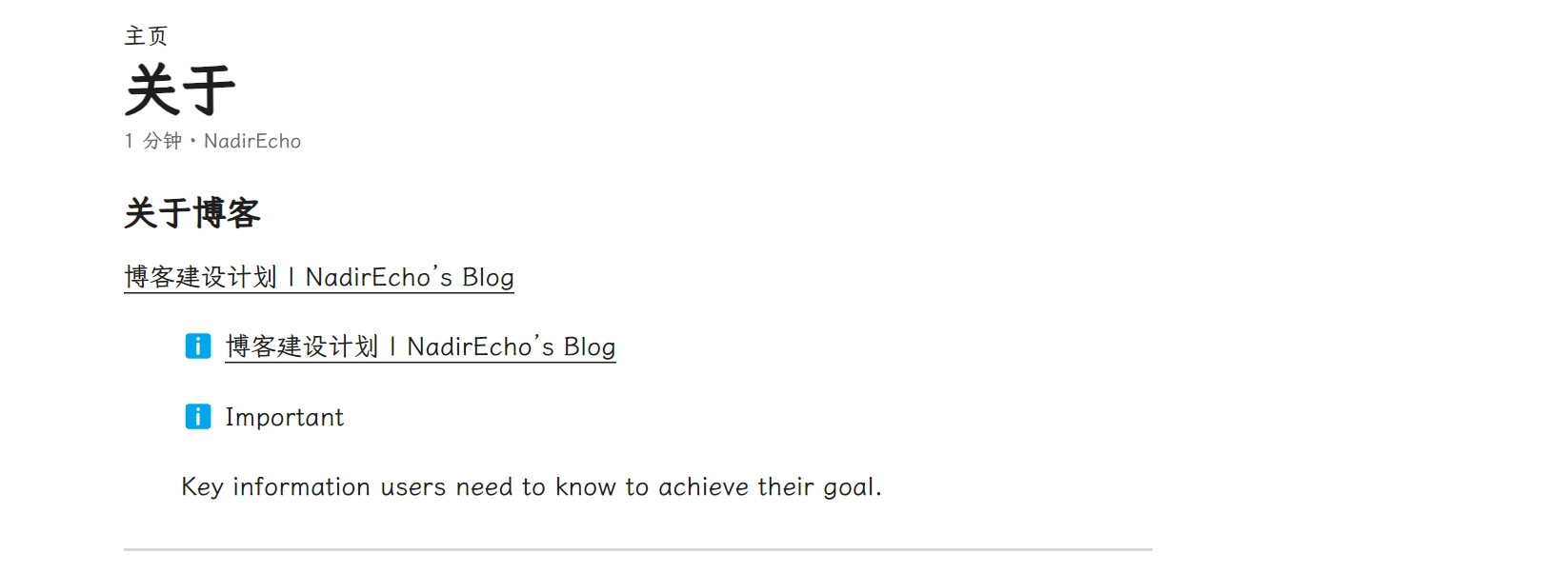In Hugo, I want to set up a shortcode for admonitions. The initial HTML template code is as follows:
{{- $inner := .Inner | .Page.RenderString -}}
{{- $iconMap := dict "note" "fas fa-pencil-alt fa-fw" -}}
{{- $iconMap = dict "abstract" "fas fa-list-ul fa-fw" | merge $iconMap -}}
{{- $iconMap = dict "info" "fas fa-info-circle fa-fw" | merge $iconMap -}}
{{- $iconMap = dict "tip" "fas fa-lightbulb fa-fw" | merge $iconMap -}}
{{- $iconMap = dict "success" "fas fa-check-circle fa-fw" | merge $iconMap -}}
{{- $iconMap = dict "question" "fas fa-question-circle fa-fw" | merge $iconMap -}}
{{- $iconMap = dict "warning" "fas fa-exclamation-triangle fa-fw" | merge $iconMap -}}
{{- $iconMap = dict "failure" "fas fa-times-circle fa-fw" | merge $iconMap -}}
{{- $iconMap = dict "danger" "fas fa-skull-crossbones fa-fw" | merge $iconMap -}}
{{- $iconMap = dict "bug" "fas fa-bug fa-fw" | merge $iconMap -}}
{{- $iconMap = dict "example" "fas fa-list-ol fa-fw" | merge $iconMap -}}
{{- $iconMap = dict "quote" "fas fa-quote-right fa-fw" | merge $iconMap -}}
{{- $iconDetails := "fas fa-angle-right fa-fw" -}}
{{- if .IsNamedParams -}}
{{- $type := .Get "type" | default "note" -}}
<div class="details admonition {{ $type }}{{ if .Get `open` | ne false }} open{{ end }}">
<div class="details-summary admonition-title">
<i class="icon {{ index $iconMap $type | default (index $iconMap "note") }}" aria-hidden="true"></i>{{ .Get "title" | default (T $type) }}<i class="details-icon {{ $iconDetails }}" aria-hidden="true"></i>
</div>
<div class="details-content">
<div class="admonition-content">
{{- $inner -}}
</div>
</div>
</div>
{{- else -}}
{{- $type := .Get 0 | default "note" -}}
<div class="details admonition {{ $type }}{{ if .Get 2 | ne false }} open{{ end }}">
<div class="details-summary admonition-title">
<i class="icon {{ index $iconMap $type | default (index $iconMap "note") }}" aria-hidden="true"></i>{{ .Get 1 | default (T $type) }}<i class="details-icon {{ $iconDetails }}" aria-hidden="true"></i>
</div>
<div class="details-content">
<div class="admonition-content">
{{- $inner -}}
</div>
</div>
</div>
{{- end -}}
This corresponds to template usage like:
{{< admonition type=tip title="This is a tip" open=false >}}
An **admonition** banner
{{< /admonition >}}
or
{{< admonition tip "This is a tip" false >}}
An **admonition** banner
{{< /admonition >}}
Theme Documentation - Extended Shortcodes - LoveIt (hugoloveit.com)
Currently, I am editing in Obsidian, and coincidentally, there is also an admonition plugin there. The format it uses does not include an open type, which refers to whether it is collapsed; I want to default this to true:
>[!tip] This is a tip
> An **admonition** banner
Is there a way to modify the initial HTML to read the Obsidian format for templates?








